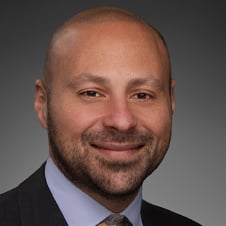South Dakota-based Sanford Health has been building up an array of value-based initiatives for decades, opting for a deliberate approach to better acclimate patients and physicians.
“The trajectory of health care in this country continues toward unsustainability,” according to Tommy Ibrahim, MD, president and CEO of Sanford Health Plan, which is a provider-owned health insurance plan that is part of Sanford Health’s integrated system of care. “The industry has been largely reliant on a fee-for-service structure but it’s not the total solution for the long term.”
“At Sanford, our focus is to create better quality and affordability in health care and align the incentives to drive more value,” he added. “We recognize that it's not something that we're going to be able to do overnight. It needs to be a thoughtful and planned transition, engaging provider partners in the process, over the course of the coming decade to ensure a viable long-term pathway.”
Sanford Health is a member of the AMA Health System Program, which provides enterprise solutions to equip leadership, physicians, and care teams with resources to help drive the future of medicine.
Twenty-six years ago, Sanford Health began taking steps toward value-based care when it launched a provider-owned and operated nonprofit health plan. Since then, Sanford Health has become the largest rural health system in the United States. Headquartered in Sioux Falls, the health system has grown to serve about 1.4 million patients annually, including 200,000 health plan members, across 250,000 square miles—much of which is rural.
“We have a stable foundation and an infrastructure that we've built over the course of that timeframe to continue to drive that value-based agenda forward,” said Dr. Ibrahim. “Our organization contracts with other payers nationally and regionally both in fee-for-service and value-based arrangements. So, we have pay-for-performance programs, shared savings models, and upside-downside risk agreements with other payers and more.”
Sanford Health Plan is also focused on growing its Medicare Advantage plan. By bringing together physicians, nonphysician providers, pharmacy resources, care management, patient navigation and virtual services—which are especially important for patients in rural areas—the health system has seen notable improvements in patient outcomes as well as strong retention rates and better patient-experience responses from Medicare Advantage members, said Dr. Ibrahim.
Emergency department visits have been reduced by 60%, inpatient admissions are down by 57%, while preventive screenings for blood pressure and depression are up. Meanwhile, Sanford Health is seeing strong retention rates and better patient-experience responses, said Dr. Ibrahim.
“As a provider-led and local nonprofit health plan, we are just different, and a lot of the headlines about Medicare Advantage just don’t apply,” Dr. Ibrahim said. “Our denial rates, prior authorization turnaround times, and member experience scores are considerably better than national averages.”
Learn more with the AMA about the keys to success with value-based care pay arrangements.
One size does not fit all
Getting individual physician buy-in is crucial. One key aspect is ensuring physicians have access to data at key decision points to help ensure the optimal care outcomes. Another is sharing regular updates on how these granular patient-level changes are advancing larger organizational value-based care goals.
“We still have work to do. A key priority for us is to mature and integrate our analytics capabilities with our clinical care delivery assets so that we're creating good visibility around the measures of success,” Dr. Ibrahim said. “It can be a challenging cultural transformation, but our leaders and providers are asking for it, which is very exciting.”
Sanford Health leaders said that adapting more value-based care approaches and processes requires flexibility and patience.
“We must make sure not to approach it as one size fits all,” said Dr. Ibrahim. “I believe we have some of the best physicians in the country who want to be engaged on the journey toward value-based care. Understanding where they are relative to that journey is always step number one. Then, and only then, do we begin to design solutions and adjust our own approach based on those conversations.”
Regarding financial incentives, there are “physicians who are totally ready to jump in and willing to discuss alternative compensation models and incentive plans, so it’s purely focused on value-based care,” he said. “But others aren’t ready for that. A top-down approach is never a successful strategy. This needs to be collaborative to work.”
Technology reaches more patients
Getting patients on board with managing their own care and using available technology to do so is another way to leverage value-based care resources to improve outcomes, but it can be difficult in rural areas. Dr. Ibrahim noted that Sanford Health’s older-adult patients are somewhat less technologically inclined. But the health system, as part of its wraparound approach, works to help patients overcome such barriers.
“Value-based care in rural communities makes a lot of sense,” Dr. Ibrahim said. “Given challenges with recruitment and the types of chronic conditions we see in our rural communities and other social determinants, we see that if we can get upstream on these issues, we can have a positive impact on health.”
The health system and health plan work together to identify opportunities to work upstream to reduce barriers, improve health outcomes and reduce costs. In 2021, Sanford Health launched a pilot with a group of individuals identified as “rising risk” – those with one or two well-managed chronic conditions and co-occurring psychosocial risk factors–and connected these patients to “health guides.”
Health guides help patients access community resources if they are experiencing food insecurity or lack reliable transportation, for example. They also help patients apply for financial and/or prescription assistance and facilitate relationships and communication with their care team. Health guide interventions among a group of 613 “risking risk” individuals have achieved a:
- 66% reduction in emergency department visits.
- 57% reduction in inpatient admissions.
- 36% improvement in blood pressure.
- 50% improvement in depression screening.
- 76% improvement in A1C.
Educating patients on how they can participate more effectively with health guides has been helpful in getting patients acclimated to a more collaborative approach with their physicians and teams. That, combined with Sanford Health’s efforts to make virtual visits more accessible, has led to positive outcomes, even with challenges in rural areas.
As part of Sanford Health’s $350 million virtual care initiative, the health plan developed a virtual care clinic for Medicare Advantage members and created a tailored experience to address their specific health needs. To date, Sanford has provided more than 3,800 virtual visits for Medicare Advantage members and made more than 600 referrals to specialists.
“We will continue to advocate for permanent legislation to ensure our patients can keep receiving virtual care,” said Dr. Ibrahim. “In many of the communities we serve, this may be the only way patients access care.
“To be able to connect to primary care and specialty resources virtually is essential. Otherwise, they’re forced to drive for hours on end to get to the right locations,” he added. “If they’re frail or have transportation challenges, or they’re concerned they’ll get a huge bill, then they likely won’t pursue the care they need. Virtual care has to be on the forefront as we talk about value.”
Visit AMA Advocacy in Action to find out what’s at stake in supporting telehealth and other advocacy priorities the AMA is actively working on.
Physicians and other health professionals at Sanford Health are gearing up to further adapt to value-based care in ways that can benefit everyone.
“The mandate is very clear for the entire health care industry to adapt and change,” said Dr. Ibrahim.
Learn with the AMA about ways to improve value-based care data sharing and advance value-based care with alternative payment models in Medicare.





